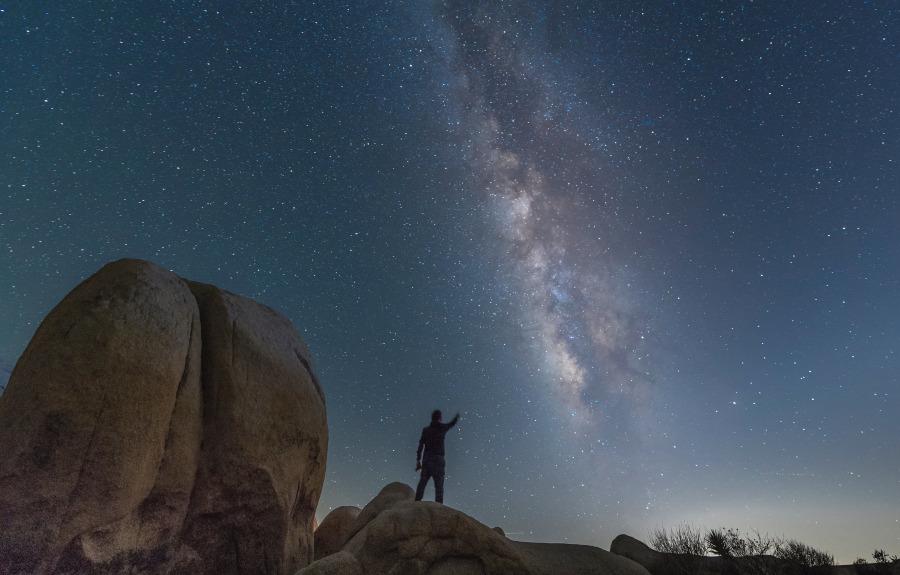In Awe of God’s Omnipresence (Part 2)
Image

Read Part 1.
Omnipresence and the Incarnation of Christ
Many Christians may not realize how closely intertwined omnipresence and communion are within the confessional Lutheran perspective. Martin Luther certainly taught “that the Lord’s bread in the Supper is His true natural body.”1 Mueller therefore admits: “The true doctrine of God’s omnipresence is of special importance for the right understanding of the Lord’s Supper (Real Presence).”2
If Christ’s physical body can be universally present in the bread of the Lord’s Supper, this would have great implications for the doctrine of omnipresence. Therefore, it’s helpful for us to understand the Lutheran position, and doing so should refine our thinking as we consider both the incarnation and Christ’s omnipresence.
Carl Trueman gets to the heart of the issue when he asserts that Lutheran teaching at this point: “… rests on the notion that certain properties of Christ’s deity are communicated directly to his human nature.”3
Luther’s view of communion went on full display at the Marburg Colloquy in October of 1529, in a doctrinal disputation with fellow first-generation Reformer Ulrich Zwingli, which was held at Germany’s beautiful Marburg Castle. Luther disagreed vehemently with Zwingli’s view that the elements in the Lord’s Supper were only symbols of Christ’s body and blood. In defending Luther, Preus states: “Zwingli’s error is basically Christological, holding that Christ in His human nature is localized at the right hand of God, and therefore He cannot be bodily present in the Sacrament.”4
Interestingly, John Walvoord wrote about “the Lutheran teaching of the ubiquity of the human body of Christ.” He stated:
… it is held that, although the elements are not transubstantiated into the body of Christ, they contain the body of Christ. This concept is considered to be supported by the teaching that the body of Christ is everywhere. … Lutheran theologians have felt that the doctrine of omnipresence as it relates to the divine nature is properly also an attribute of the human body of Christ.” He concludes, “While it is normal for theology to consider Christ in His divine nature as omnipresent, the humanity of Christ always seems to have a local concept….5
When all is said and done, are Lutherans just emphasizing the omnipresence of Christ’s Divine nature and its presence in the communion bread? Actually, no. Mueller is adamant: “… the omnipresence of the human nature was … divine and supernatural.”6 But, Walvoord counters, “Infinity cannot be transferred to finity … the two natures of Christ cannot lose or transfer a single attribute.”7 Trueman states likewise, “… Reformed theology … holds to the principle that what is finite cannot comprehend or contain the infinite.”8 On this basis alone, we conclude that it is not Christ’s actual physical body that we receive when we “partake of the Lord’s table” (1 Cor. 10:21).
But Steven P. Mueller gets to the bottom line for Lutherans when he states, “Human reason cannot comprehend how Christ’s body can be in the bread of this meal or his blood in the wine.”9 He continues:
The precise mechanism is a mystery to us: a mystery that cannot be explained in terms of human physics, chemistry, metaphysics, or philosophy. We believe the Lord’s words even though we cannot explain the presence of the body and blood.10
However, as the ESV Study Bible states simply: “One nature of Christ is sometimes seen doing things in which his other nature does not share.”11
The Current Session and Future Return and Reign of Christ
In His Divine nature, Christ continues to be omnipresent. But where then is Christ’s physical body located today? Acts 3:21 is a key text regarding His current ministry in Heaven. The New Testament is especially clear that He is currently seated at the right hand of God the Father. Amazingly, it essentially makes this assertion 21 times. See, for instance, Ephesians 1:20 and Colossians 3:1. Two more references describe Him “standing at the right hand of God” (Acts 7:55, 56).
Dispensationalists see an important distinction between Christ’s current session and His future reign over the entire Earth, in the millennial kingdom, from “the throne of David” in Jerusalem (see Isa. 9:7 and Luke 1:32). The difference between these two is described explicitly in Revelation 3:21. He is currently sitting “with (His) Father on His throne.” But one day He will rule from His own throne.
This article first appeared in the Voice magazine (May/June 2022). Used by permission of IFCA International. The original article can be read at: https://www.ifca.org/file/b1eb0370-2323-11ed-a52f-25a71110f36e
Notes
1 Quoted by Herman A. Preus, A Theology to Live By, (St. Louis: Concordia Publishing House, 1977), 157.
2 John Theodore Mueller, Christian Dogmatics, (St. Louis: Concordia Publishing House, 1934), 167.
3 Robert Kolb and Carl R. Trueman, Between Wittenberg and Geneva, (Grand Rapids: Baker Academic, 2017), 76.
4 Ibid., 160.
5 Jesus Christ Our Lord, (Chicago: Moody Press, 1969), 115-116.
6 Mueller, 280-281.
7 Walvoord, 115.
8 Kolb and Trueman, 76.
9 Steven P. Mueller, Called to Believe, Teach, and Confess, (Eugene, OR: Wipf and Stock Publishers, 2005), 353.
10 Ibid., 354.
11 Wayne Grudem, gen. ed., (Wheaton, IL: Crossway, 2008), 2,519.
NKJV - Source
Scripture taken from the New King James Version®. Copyright © 1982 by Thomas Nelson. Used by permission. All rights reserved.
Paul Scharf 2023 bio
Paul J. Scharf (M.A., M.Div., Faith Baptist Theological Seminary) is a church ministries representative for The Friends of Israel Gospel Ministry, based in Columbus, WI, and serving in the Midwest. For more information on his ministry, visit sermonaudio.com/pscharf or foi.org/scharf, or email [email protected].
- 124 views


Discussion